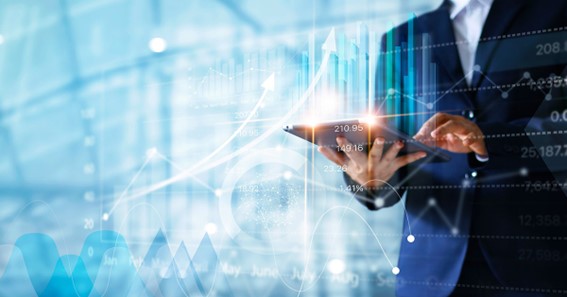Are you curious to know what is trade cycle? You have come to the right place as I am going to tell you everything about trade cycle in a very simple explanation. Without further discussion let’s begin to know what is trade cycle?
In the vast ocean of economic phenomena, the trade cycle stands out as a powerful current that ebbs and flows, influencing the fortunes of nations, industries, and individuals alike. Also known as the business cycle, the trade cycle is a rhythmic pattern of alternating economic expansions and contractions that shapes the trajectory of economies around the world. In this blog, we’ll dive deep into the trade cycle, exploring its phases, causes, and impact on various facets of society.
What Is Trade Cycle?
The trade cycle is a recurring pattern of economic growth and decline that unfolds over a certain period, typically ranging from a few years to a decade. It represents the cyclical movement of an economy’s output, employment, and other economic indicators. The trade cycle is marked by four distinct phases:
- Expansion (Boom): This phase is characterized by increased economic activity, rising production, higher consumer spending, and decreasing unemployment. Businesses thrive, profits soar, and optimism abounds as the economy reaches its peak.
- Peak: The peak represents the zenith of economic growth within a cycle. It’s the point at which economic indicators are at their highest levels. However, at this juncture, signs of potential overheating and inflation start to emerge.
- Contraction (Recession): As the peak subsides, the economy enters a period of slowdown. Production slows down, unemployment rises, and consumer spending declines. Confidence wanes, and businesses become more cautious, leading to a decline in economic activity.
- Trough: The trough marks the lowest point of the trade cycle. Economic indicators hit their nadir, and the economy is at its weakest. It’s a phase of pessimism and reduced economic activity.
Causes Of The Trade Cycle
The trade cycle is a complex interplay of various factors, both internal and external, that influence economic performance. Some key drivers include:
- Demand and Supply Shocks: Sudden changes in consumer demand, technological advancements, or shifts in resource availability can lead to fluctuations in economic output.
- Monetary Policy: Central banks’ decisions on interest rates and money supply can impact borrowing costs, consumer spending, and business investments, thereby affecting the trade cycle.
- Fiscal Policy: Government taxation and spending policies can influence the level of aggregate demand in the economy, contributing to cycles of expansion and contraction.
- External Events: Global economic conditions, geopolitical tensions, and natural disasters can have ripple effects on an economy, disrupting its trajectory.
Impact On Society
The trade cycle’s undulating nature has far-reaching effects on various aspects of society:
- Employment: Fluctuations in economic activity directly impact job creation and unemployment rates. Expansion phases lead to job opportunities, while contractions result in job losses.
- Business Confidence: The trade cycle greatly affects business sentiment and investment decisions. During booms, companies expand and invest, while recessions prompt caution and cost-cutting measures.
- Consumer Behavior: Consumer spending patterns are closely tied to economic conditions. Expansions boost consumer confidence, encouraging spending, while recessions lead to belt-tightening.
- Government Policies: Governments often respond to trade cycle phases through fiscal measures and monetary interventions to stabilize the economy.
Conclusion
The trade cycle is a natural ebb and flow of economic activity that shapes the fortunes of nations and individuals alike. Its cyclical nature, characterized by phases of expansion, peak, contraction, and trough, underscores the dynamic and interconnected nature of economic systems. Understanding the trade cycle’s causes, impact, and implications is crucial for policymakers, businesses, and individuals seeking to navigate the unpredictable waters of economic fluctuations and harness opportunities during periods of growth while weathering the challenges of downturns.
FAQ
What Is Meant By A Trade Cycle?
Meaning of Trade Cycle: A trade cycle refers to fluctuations in economic activities specially in employment, output and income, prices, profits etc. It has been defined differently by different economists. According to Mitchell, “Business cycles are of fluctuations in the economic activities of organized communities.
What Are The 4 Phases Of The Trade Cycle?
The four important features of Trade Cycle are (i) Recovery, (ii) Boom, (iii) Recession, and (iv) Depression! The trades cycle or business cycle are cyclical fluctuations of an economy. A full trade cycle has got four phases: (i) Recovery, (ii) Boom, (iii) Recession, and (iv) depression.
What Is The Example Of Trade Cycle?
The economic trade cycle shows how economic growth can fluctuate within different phases, for example: Boom (which is a period of high economic growth possibly causing inflation) Peak (top of trade cycle, where growth rates may start to fall)
What Is The Economic Cycle Or Trade Cycle?
An economic cycle is the overall state of the economy as it goes through four stages in a cyclical pattern: expansion, peak, contraction, and trough. Factors such as GDP, interest rates, total employment, and consumer spending can help determine the current stage of the economic cycle.
I Have Covered All The Following Queries And Topics In The Above Article
What Is Trade Life Cycle
What Is Trade Life Cycle Investopedia
What Is Trade Life Cycle In Investment Banking
What Is Trade Cycle In E Commerce
What Is Trade Life Cycle In Simple Words
What Is Trade Cycle What Is Settlement Phase Of Trade Cycle
What Is Trade Cycle And Its Phases
What Is Trade Cycle
What is meant by trade cycle
What is trade cycle?

